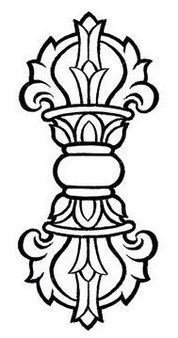The kanji for left and right may, on first sight, seem slightly confusing. It is not until we understand a little about traditional metaphysics (which was how the ancient Chinese, Japanese and everyone else before the last few centuries actually thought) that they make sense.

The kanji for both left 左 and right 右 feature a hand. This is normal, as the concepts “left” and “right” are always linguistically associated with hands. In English we speak of “the left-hand side” etc. The hands are each holding something representative of their particular side. Migi (Right) holds a mouth 口. Hidari (left) holds a symbol that means craft 工.
Why is left associated with craft? In the literal-minded thinking of the modern world, this seems counter-intuitive, since it is the right hand that is dextrous (from Latin dexter = right) and most capable of making things.
Then we look at the kanji for migi (right) and that has a mouth. Why a mouth?

Traditionally every action has two components: Wisdom and Method. These correspond to the cosmic duality of Essence and Substance. To do anything we must know how to do it. In the modern West, this has come to mean technical knowledge alone. In Japan there is still the concept of the Way 道 — the proper way that a thing should be done within the harmony of earth and heaven.
Wisdom is the teaching – the “word” by which we know the Way. Method is the physical actions that make the Way manifest in whatever we are doing.
The kanji for the Way 道 on its own is pronounced michi which can mean a literal road or the Way. In combinations it is pronounced dou and is found in the names most of the traditional Arts, because each art is precisely a Way which correctly followed leads to a measure of enlightenment.
Tatoeba (for example):
弓道 kyuudou is the Way of Archery
剣道 kendou is the Way of the Sword (kendo)
茶道 sadou is the Way of Tea (tea ceremony)
書道 shodou is the Way of Writing (traditional calligraphy)
Wisdom is the Teaching of the Way; Method is the Following of the Way. Vital to the Way in any form is the Sensei, the Teacher of the Way.
Wisdom and method are not equal. Wisdom must always lead and Method follow or the work will be out of harmony and not in the true Way.
Symbolically the right hand (the superior hand) is the hand of Wisdom and the left hand (the supporter hand) is the hand of Method. Therefore it is natural that Right should have a mouth symbolic of the teaching of the Way, while Left represents the physical and outward aspect of craft.

Interestingly, in Tibet, Wisdom is represented by the bell and Method by the dorje (Sanskrit vajra). The dorje [pictured right] is the same essential shape as the 工 of hidari (the dorje elaborated and 工 reduced to barest essenitals), while the bell emits sound (symbolic of teaching) like the mouth 口 of migi.
Naturally, in rituals, the bell is always held in the right hand and the dorje in the left hand.
To ring (a bell) in Japanese is 鳴る naru. This kanji also contains a mouth (sound) and also a bird. “The language of birds” is in various traditions symbolic of the language of angels, and the ringing of bells symbolic of that same angelic teaching.
Kanji do make sense read in the light of the traditional wisdom that underlies them, and the kanji for right and left, migi and hidari, are easy to understand once we are aware of the thought-world from which they emerged.